Red area outlines dune restoration area.
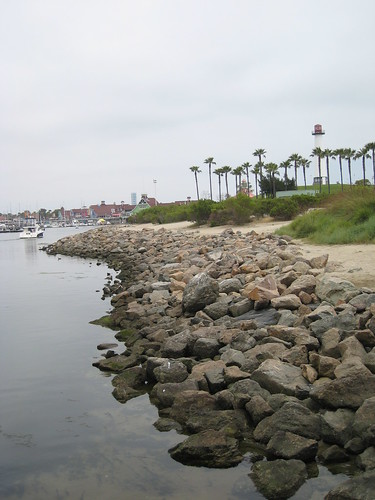
Shoreline Park may seem like an incongruous place for nature--it is, after all, built on artificial landfill. The open water and mudflats that used to be found here have been destroyed to create Rainbow Harbor. However, the park that now sits on top of this fill has a small restoration area that includes a habitat found in no other place in Long Beach--the sand dune. In addition, the park is a great place to observe rocky shoreline and open water habitats. And, of course, the park is home to The Aquarium of the Pacific, one of Southern California's premier destinations for anyone curious about the natural world.
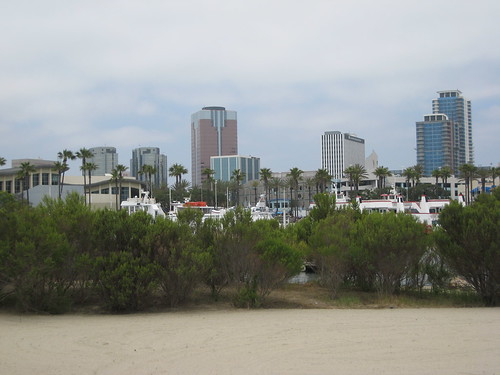
The skyscrapers of downtown Long Beach are easily visible from the restoration area.
Sand dunes were probably common along the beaches and island around Long Beach, but the creation of the Port and development along the beach has essentially erradicated them. The "dune" in Long Beach in no way resembles the real thing--you actually get a more reasonable facsimile at the eastern end of the Beach near the Peninsula, where the sands blow freely in the breezes. However, many plants of a mature dune community have been planted here to recreate the ecosystem.

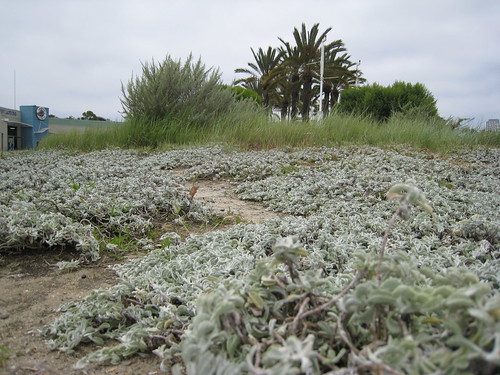
Principle among these plants is the familiar shrub, coyote bush (Baccharis pilularis).

Coyote bush is the most common shrub in the dunes of Shoreline Park.

This shrub has a gall, possibly caused by the Baccharis gall fly (Cecidomyiidae: Rhopalomyia californica). Although the gall kills the growing tip of the branch, the plant is generally not severely affected by this parasite.
California sagebrush is the other common shrub. Its leaves release a distinctive odor when crushed.
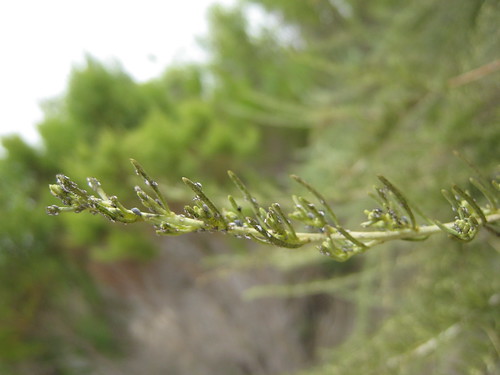
California sagebrush (Artemesia californica). Although the odorous oils in the plant are thought to make the plants distasteful to herbivores, it seems that these aphids are undeterred.
The shrubs have an understory of wildflowers, including the beach evening primrose (Camissonia cheiranthifolia), seacliff buckwheat (Erogonum parvifolium), and bush sunflower (Encelia californica).
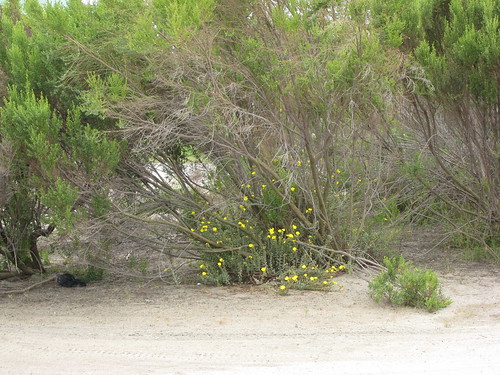
Wildflowers grow under and between the shrubs.

Unlike the more common buckwheat found further from shore, seacliff buckwheat (Eriogonum parvifolium) has heart-shaped leaves.

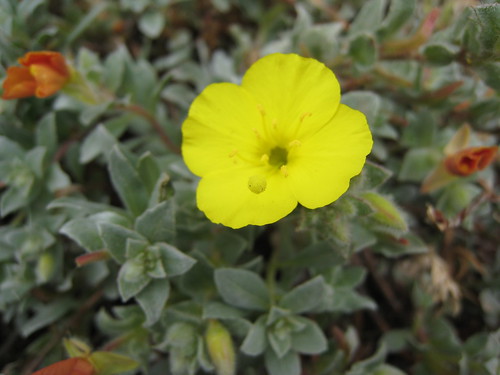
Beach evening primrose (Camissonia cheiranthifolia) can grow as a low, spreading plant or upright as a small shrub.)
A few of the more eye-catching nonnative weeds I saw in the park:
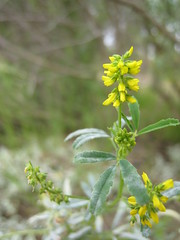
Yellow sweetclover (Melilotus indica)

White sweetclover (Melilotus alba)

Scarlet pimpernel (Anagallis arvensis)
The stone riprap that protects the park from erosion creates a second habitat to observe at Shoreline Park: the rocky shoreline.

Sea birds are abundant and conspicuous here--many gulls, egrets, and cormorants patrol the shores looking for fish and invertebrates in the shallows or in the mud.
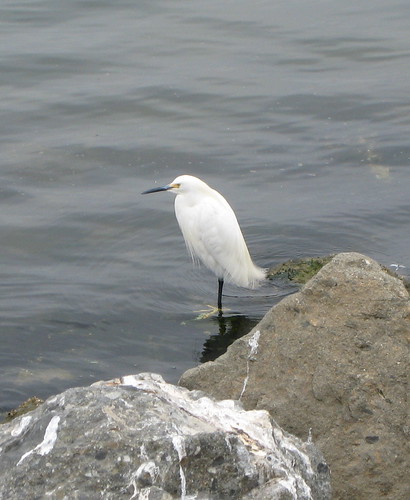
Snowy egrets (Egretta thula) are easily identified by their black bills and bright yellow feet.
It is easy to observe the abundant mussels (Mytillus californianus) and acorn barnacles (Balanus spp.) that attach to these rocks, as well as sea lettuce (Ulva spp.). Schools of fish (mostly perch) swarm in the shallows. Interpretive signs erected by the Aquarium optimistically tell you to keep an eye out for California sea-hares (Aplysia californica), but the water was far too turbid, oily and slicked with grime to discern these creatures.
The Aquarium has put up a lot of interpretive signs around the park. One of the most interesting was a 3-D painting of the Los Angeles Basin.
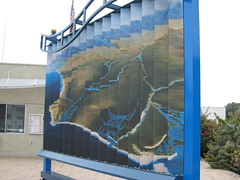
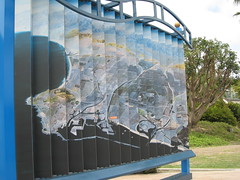
Seen from one side, you see the pre-development basin. But from the other angle, you see the modern-day landscape.
Acess to the park is easy by the Shoreline Bike Path, the LB Transit Passport, and Pine Avenue Link.
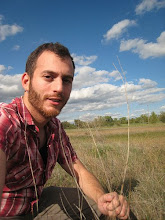

No comments:
Post a Comment